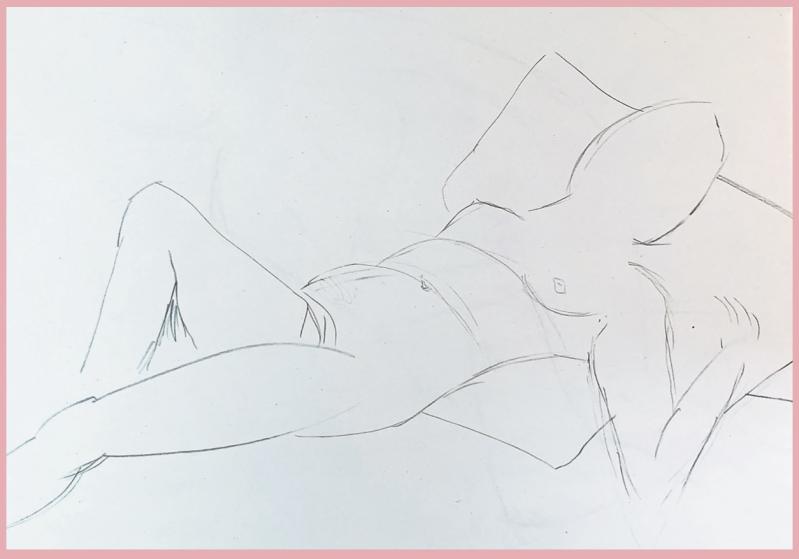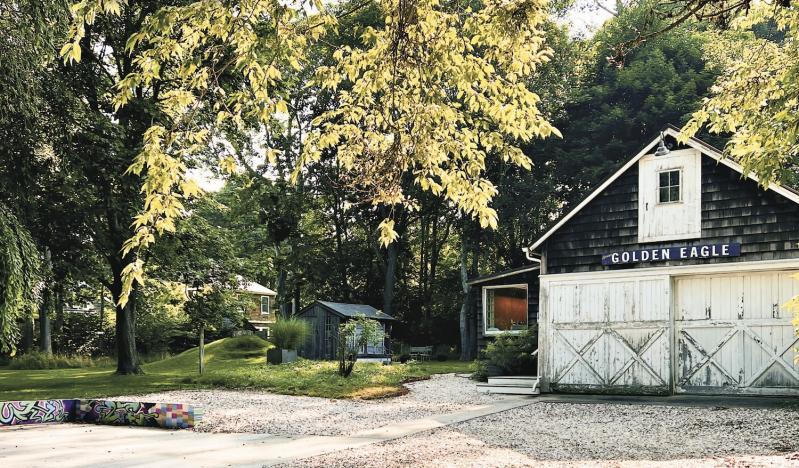When I was asked by my editors to take a life-drawing class and submit my final result for publication, they also men- tioned that I was being asked to do this assignment because I am “funny.” Of this I am sure; for proof, please see my story “No Second Serving Please,” of May 19, 2022, in The East Hampton Star.
What they didn’t know is that between high school and college (1972 to 1973), I attended the Corcoran School of Art in Washington, D.C. It was here that I learned, definitively, that I can’t draw a damned thing. My grandfather was an artist (Gerald Murphy, check him out at MoMA, the Whitney, Dallas Museum of Art, Yale University Art Gallery, and more), and my brother John is a fine artist. Me? Meh. I was suffering under the impression that maybe artistic talent is genetic, or travels through lineage via osmosis, or ontogeny recapitulates phylogeny. I am not an artist, but I am a good cook and a good writer.
So here I was, 30 years later, in the barn at the back of the Golden Eagle Art Supply store in East Hampton, about to participate in a life-drawing class taught by Linda Capello, former fashion illustrator, superb anatomist, and figure drawer.
The two-hour class was divided into timed segments: Our first sketches were to be three minutes, then 10, then two 25-minute sessions. Some students used easels, the rest of us propped our jumbo newsprint pads on boards. It's very important to not try to draw on a flat surface, such as the desks in front of us. Our tools were one soft pencil, one charcoal, one eraser. Our model was a lovely young lady named Dori, and my classmates were Suse, Sally, Beth, and Nadia.
Linda Capello firmly instructed us to not start drawing at the beginning of each timed segment. "Just look first," she said. "Then set your intention, then draw. Accuracy and style are different. You owe it to the model to try for accuracy."
At this point I should apologize to Dori for thinking my 10-minute sketch resembled Japanese artist Isoda Koryusai's Shunga, Seamstress and her Lover, a painting in the ukiyo-e genre of Japanese art in the 17th to 19th centuries.
Linda also pointed out, helpfully, that the torso resembles a bean shape. My first torso was more like a Chinese long bean than a Great Northern or Pinto as she meant.
"What your brain is telling you us completely useless. Draw what you see, not what your brain is telling you to see."
When she started discussing negative space and dimensions, I found myself fiddling with my gooey, malleable eraser. It would slip and slide over the paper, dropping little giblets off as I attempted to remove embarrassing traces of my efforts.
As she made her way around the studio, critiquing each students' work, adding a quick line or piece of advice, she told me I had improved already in just the first hour of class. She also used more food references to help me.
"See her leg? It's like a Japanese eggplant." I thought to myself, "Ahh, yes, and her nose could be an enchanting Fairy Tale eggplant, her stomach a Globe, and her ears are tiny Thai eggplants. . . ." Didn't help my skills a whit, but I enjoyed imagining that it did.
It turns out that most of the other students are accomplished artists. Nadia is a photographer and painter, Beth a multimedia painter. Suse is Suse Lowenstein, the sculpture best known for her work Dark Elegy, a series of sculptures depicting the grief of families upon learning that a member of their family died in the Pan Am Flight 103 that was blown up over Lockerbie, Scotland, in 1988. I have seen these works at her house in Montauk and they are staggering, painful, haunting, and moving, and it is unimaginable that she was able to create these sculptures after losing her own son, Alexander, in that terrorist attack.
After our class, I found myself lingering and loitering around the Golden Eagle store with its owners, Michael Weisman and Nancy Rowan. I was wishing I was an artist and contemplated other classes that they offer. “How about printmaking?” Michael suggested. That would be fun, I thought, but then I spied an indigo dye kit and decided that might be more my speed. Or pot-holder weaving, perhaps? Beading, maybe?
Besides my grandfather and brother, my son, Adrian, is an artist, and his grandfather Adrian was an artist. My son’s drawing talent emerged in the sixth grade when he became obsessed with animé and manga, the Japanese art forms of cartooning for comic books, graphic novels, and animation. I asked him how he became interested, then dedicated and prolific. He answered:
“When I really started getting into drawing comics, I was driven by two constants: practice and passion. Get a grasp on the basics and just draw what makes you happy as often as possible. Always keep a sketchbook. Take inspiration from your surroundings, your emotions, other artists — anything. Like any new pursuit, it can be daunting and frustrating at first. But someday you’ll produce something amazing, and you’ll be really proud of it. It can come entirely out of left field or even by mistake, but what matters is that you produced it — and it’s awesome.”
As you can see, he is also a mighty fine writer. As for me, it’s literally back to the drawing board. I think I shall begin with eggplants.

LAURA DREW, AND YOU CAN, TOO
For anyone who's dreamt of drawing (or painting, print-making, or sculpting) but doesn't know how to begin, here are some studios that can provide a solid foundation.
GOLDEN EAGLE ART SUPPLY STORE
144 North Main Street, East Hampton
631-324-0603; goldeneagleart.com
Linda Capello starts a new, four-week session of life drawing every month for artists at any and every experience level. The Golden Eagle philosophy is that “any subject is easy to draw when we simplify the process.” Students enrolled in the class receive discounts on art supplies purchased through the store.
SOUTHAMPTON CULTURAL CENTER
25 Pond Lane, Southampton Village
631-287-4377; scc-arts.org
Capello is also the teacher at this venue, where students have two options: a free- form, four-hour uninstructed life-drawing session on Tuesdays, and a shorter version of the class on Thursdays where she leads lessons in anatomy, proportion, mass, and line quality.
EAST END ARTS
141 East Main Street, Riverhead
631-369-2171; eastendarts.org
Artists of all levels — including adults, teens, and children — will discover at East End Arts a wide range of year-round classes, including self-portraiture, figure drawing, mixed media, plein-air painting, photo-realistic painting, and more.
THE VICTOR D’AMICO INSTITUTE OF ART
Napeague Meadow Road, Amagansett
631-267-3172; damico-art.org
The Art Barge, as it’s commonly known, is pure heaven for aspiring artists. The noted artist Scott Bluedorn (whose work graces the cover of this edition of East) frequently teaches drawing here, with an approach that emphasizes both “conventional and unconventional ways of seeing,” according to his class description.
SUFFOLK COMMUNITY COLLEGE
Locations in Riverhead, Selden, and Brentwood
631-451-4000; sunysuffolk.edu
Casual adult learners can sign up for community college classes on a non-credit-bearing basis, with some restrictions. Suffolk’s visual-arts curriculum includes several drawing classes that offer a “foundation for both fine and commercial art.”


